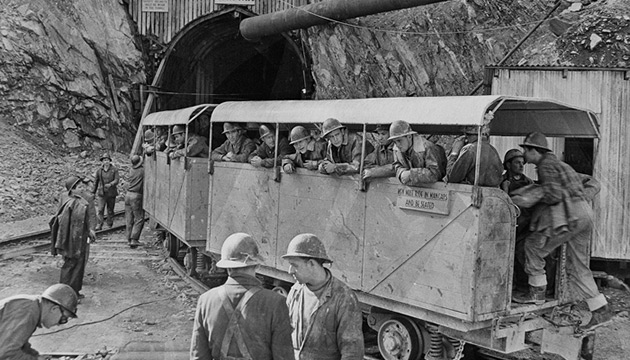The Snowy Mountains Hydro-Electric Scheme remains one of our country’s greatest engineering achievements. Its impacts – socially, culturally and economically – continue to be felt in the town of Adaminaby.
Story By Amanda Burdon
Forty-one years have passed since the Snowy Mountains Hydro-Electric Scheme was completed. A monumental project that spanned 25 years, it cost $820 million and engaged some 100,000 workers, many of them Europeans displaced by World War II.
Still considered the greatest engineering project ever undertaken in Australia, the scheme pioneered ingenious construction techniques to interlock seven power stations and 16 major dams through 255 kilometres of trans-mountain tunnels and 80km of aqueducts. Apart from its massive electricity generating power, the project enabled the expansion of irrigated agriculture throughout the Murray Valley and fast-tracked multiculturalism (two-thirds of its workers were migrants from over 30 countries), playing a major role in the development of modern Australia.
However, as in any undertaking of this magnitude, there were both winners and losers, and nowhere is this more apparent than in the town of Adaminaby, the scheme’s birthplace. It was here that the project was officially launched – on October 17, 1949 – and here that residents made way, literally, for progress as the scheme’s largest water storage, Lake Eucumbene, drowned their close-knit rural township.
The commissioner of the Snowy Mountains Hydro-Electric Scheme from 1949–1967, William Hudson, reportedly said at the time: “... from a national viewpoint ... the loss of this historic township and the pastures of the Adaminaby Basin is more than justified by the enormous potential of the water”. However, the relocation of the town – house by weatherboard house 8km inland using old army Blitz trucks and low-loaders – created feelings of displacement and, in some cases, resentment that lingers today.
“We didn’t like being uprooted, but you had no choice; you just had to accept it,” says Gwen Russell, now 94 and living on the remains of her husband’s family property adjacent to Old Adaminaby. “It was a good community in Old Adaminaby and the move ripped the place apart. It was a big upheaval for my parents [Ethel and Jack Constance].” Their block was primarily above the high-water level, but was resumed without compensation and without the option of building on higher ground. It was a bitter blow, especially for Jack, who had endured two nervous breakdowns after returning from WWI.
This Story is from Issue #102
Outback Magazine: Aug/Sept 2015










